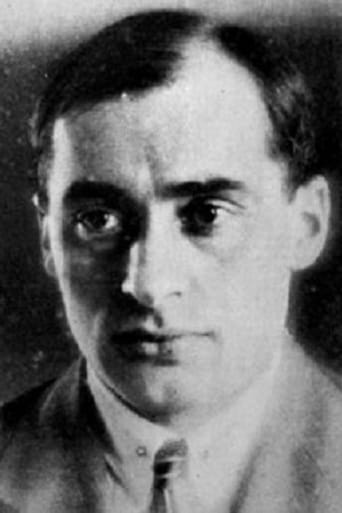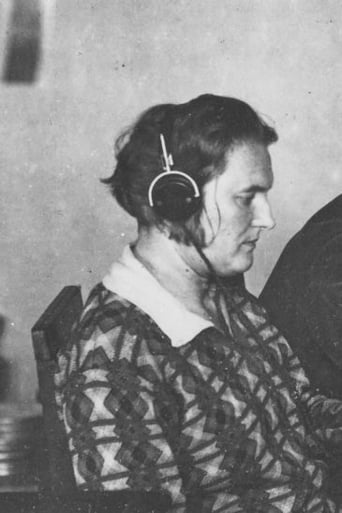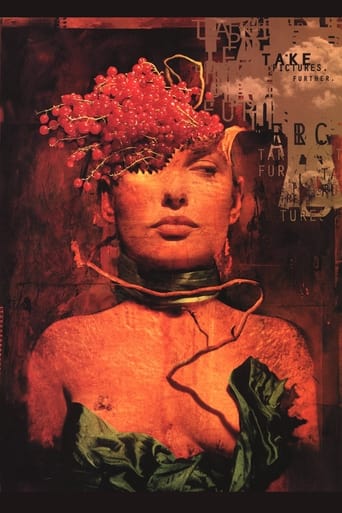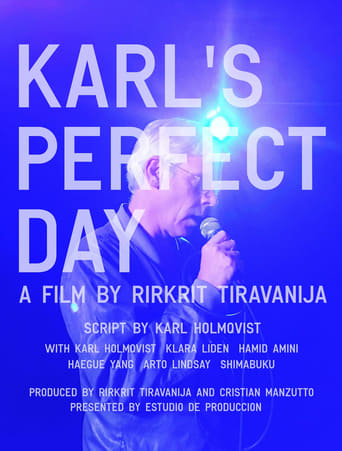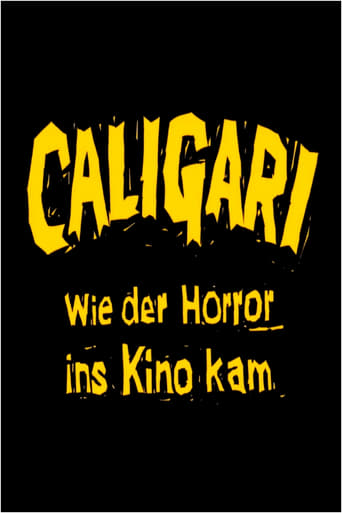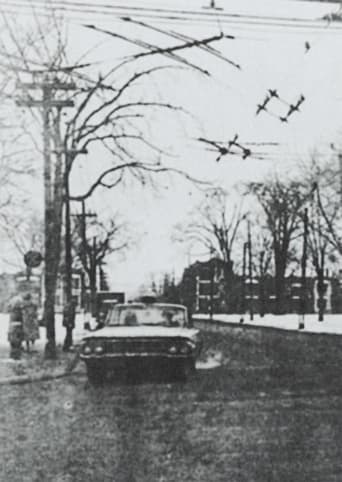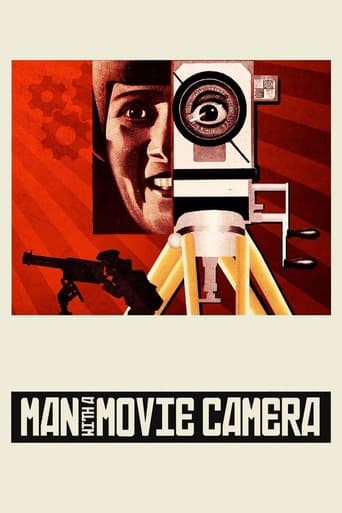
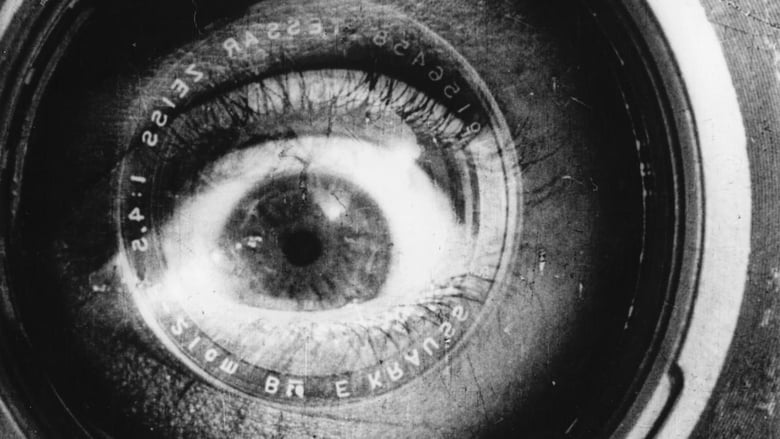
Man with a Movie Camera (1929)
A cameraman wanders around with a camera slung over his shoulder, documenting urban life with dazzling inventiveness.
Watch Trailer
Cast


Similar titles
Reviews
Dziga Vertov's 1929 film Man with a Movie Camera stands even today as one of the most powerful and breathtaking films of all time. Vertov's use of captivating lively scenes help to showcase a wide variety of emotions and likenesses describing what Russia and the City of Moscow were going through in their early communist era. Although silent this film speaks volumes as to what the capabilities and possibilities were at the time by bringing the reader into a broad range of fast cutting segments as well as close zooms that were revolutionary at the time they were first brought into modern film. I lost count on the instances where I found my eyes glued to the film in anticipation of what Vertov's crew would come up with.In instances of day to day life one may never consider drama to form in a way that conveys a message. This film captured this sense perfectly in its many on-screen sections that depicted the lives of the strangers in the film. Scenes of people going about their daily lives has never before been such an art form, let alone to those watching in the 1930s but even today. I am captivated by the meshing of multiple scenes together to create a work of art. One example of this are the trolley scenes where the film makers split the frame in half and give away the illusion that the area held within the combined frame is full of life and movement. Vertov also helped convey a sense of early Russian propaganda in an instance where the cameraman is shown standing high above the city peering into and recording the daily lives of the citizens below. The use of mise en scène is important in these two scenes because they always fill the screen with exactly what you are supposed to see, and there are no extras that could affect the vision of the film for the viewer.The film uses many different points-of-view to help captivate the viewer. I felt in many scenes that the director was trying to use every new trick that they had when it came to film making to make the film exciting. One example of a use of this was in the scene with the blinking girl transitioning to the rapid opening and closing of the window blinds. This scene was pivotal in drawing a viewer's eyes to the screen, the fast-changing scene caused the viewer to focus on what was happening in the film at that specific time. Another scene that helped bring the viewer into the film was when the camera appeared to be run over by the train early in the film. To someone watching the film in the 1930s one would question as to how the cameraman could have possibly survived such a stunt, causing much intrigue in the audience. Although the next scene shows how the crew simply dug a hole under the track and eventually escaped with their footage and unharmed. This captivating showing of originality was what set this film apart from films even today in my eyes. I never once felt for a moment that I was missing out on the lack of sound in the film as it was made up entirely visually.It has been shown, and through its very modernistic and knowledgeable approach in experimentalism that Man with a Movie Camera was a film decades beyond its time. The ability to capture an audience with things they may have never seen before is unparalleled in many films even today. The crew behind the film attempted to convey the message that there is more to film than just telling a story, it can move and shock the audience while captivating the feel of emotion within them. Fast moving scenes and witty editing come together perfectly to create an instant classic that I would recommend to anyone looking to truly understand what goes on behind the scenes of a film, and what goes into making a film that can draw an audience in effortlessly.
Man with a Movie Camera, directed by Dziga Vertov, is a unique film. It has no actors nor story, it is a film within a film. It takes place in an urban setting, a montage of the urban life in and around a Russian city. The film anticipates many of the techniques that is celebrated even up to this day, it is timeless in its unique ways. The title describes what is happening: we see the cameraman recording the images we are seeing. An important aspect of this film is in the way scenes progress and the types of montage established, the film's main subject is basically the man and cinema. A revelation of the film is acknowledged for introducing many camera techniques like double exposure, fast motion, slow motion, freeze frames, jump cuts, split screens, extreme close-ups, tracking shots, backwards footage and stop motion animation. Today, it is widely used and developed.Other than Vertov's revelation of camera techniques, Man with the Movie Camera opened different point of views on how the film is being perceived. Many parts of the film showed machinery and factories - the mass production and consumption of image. Even at the beginning of the film, how the theater depicted the daily life of different classes of people. The difference between the working class and the upper class is shown in several scenes. As seen in the film, there are scenes wherein the busy lives of laborers working in factories contrast to those people enjoying the beach and watching sports. In Marxist ideology, Vertov's portrayal of industrialization, is one of Marx's arguments was that the bourgeoisie abused the proletariat. How the bourgeois industriousness ignored the origins of their wealth – the exploitation of the proletariat, the urban workers, which on my opinion is quite evident in the film. It's amazing how simple activities captured on camera create an impact on how the world is then dictated by social status.Additional points to support my observation, there is another scene in the film when a woman waking up started to wash her face then cut to high pressure water cleaning off a pole. Next cut is the scene where the woman begins to wipe herself with a cloth and then the film cuts to another woman wiping off a window with a similar cloth. Then the same woman starts blinking her eyes the blinds on the windows start opening, just like the eyes of the woman. It also may imply the idea of the growing importance of machinery and highlighting the fact that machinery is an important component in film and that the only way a film can be a combination of hardworking human laborers are like machines. Issues raised throughout the film is not just timely during Vertov's time of recovery from war, it is timeless in a way that even with the absence of war today, capitalism and social status barrier is still being experienced by many.Vertov carefully crafted an art to be appreciated and effectively raise awareness in their time and for the next years to come. Man with the Movie Camera is a visual masterpiece, which showcased a universal work of art that continuously display infinite possibilities of how cinema was and what cinema can be.
I saw this film for the first and second time last night.The first time I saw this film it was with the soundtrack by the Alloy Orchestra, apparently composed around the director's notes. This happened to be my favourite part. The actual images on-screen, while well-shot, were boring and I had to strain my interest to keep watching until the end. I could at least appreciate the intentions of the filmmakers, which was to make an "experimentation in the cinematic communication," or a film without intertitles, without actors and without a story.This intention, as well as the appreciation for the film by many people, was enough for me to decide to watch it again, this time without the soundtrack by the Alloy Orchestra. I'm really glad that I did.The second time I saw this film the seemingly random assortment of images on-screen, I realized, for in place for a reason. There is not a story in the conventional sense, as advertised, but I felt that the film captured a story of life itself - compare the contrasts of marriage and divorce, life and death. I was interested enough to sit through the film again as a whole, despite the absence of the soundtrack (which I felt may have been a distraction for me).I don't really know how an audience would have reacted to this film in 1929, when it was first released, but it ought to have been a rewarding experience for some, and it was certainly an influence for many.
This Russian silent film was featured in the book 1001 Movies You Must See Before You Die, I assumed it was a drama or themed story, I had no idea it was a documentary or experimental film, but I was definitely going to watch it because of the high ratings from critics. Basically it is an unabashedly avant-garde style film that proves that film can do anything and take the audience anywhere, it revolutionised many camera effects and techniques that have become standard and often adapted into various genres of film. Camera and editing effects seen in the film include slow motion, fast motion, freeze frames, stop motion animations, footage played backwards, dissolves, tracking shots, double exposure (two or more images played at once), Dutch angles (slanted filming), extreme close-ups, split screens and jump cuts. There is no story, no dialogue, no acting and no setups in the film, it is simply filming Russia as it is, filmed in the Ukrainian cities Odessa, Kharkiv and Kiev it shows every day (then) modern life in the Soviet Union, the working life, the leisures, the transport, the machinery and the various environments. There are occasional shots of a Cameraman (Mikhail Kaufman), the only character of the film, setting up and using his camera in various places, including on a roof and in a beer glass, but otherwise it is all natural occurrences and sights to behold on film. This film apparently took some time to film and edit, you have to give the filmmakers, director Dziga Vertov and editor by his wife Elizaveta Svilova, great credit for creating a masterpiece, inspiring filmmakers for years to come, proving that anything is possible with the various camera techniques used to create whatever story you want, an excellent and radical silent experimental documentary. Outstanding!


